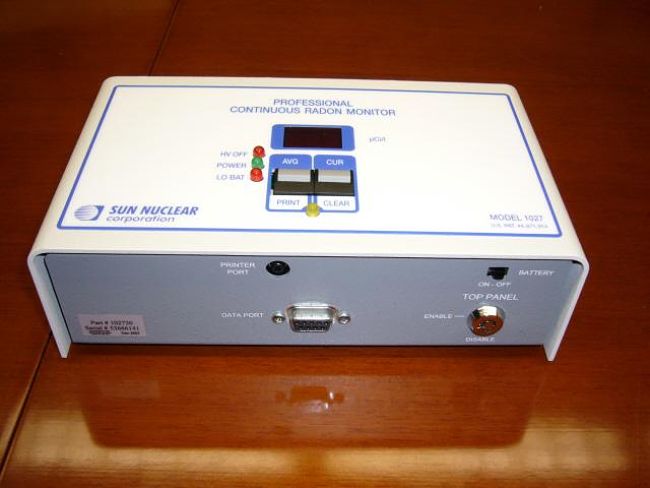Radon Gas Accumulations
Radon is a colorless and odorless gas, and therefore not detectable by human senses alone. Radon gas is a noble gas and not very reactive with any substance. Radon gas is extremely dense which allows it to accumulate in low areas like basements.
Some people still don’t believe radon is a real concern. How about you?
High concentrations of radon in homes were discovered by chance in 1985 after the stringent radiation testing conducted at a nuclear power plant entrance revealed that Stanley Watras, an engineer entering the plant, was contaminated by radioactive substances. Some level of radon will be found in most homes.
Radon enters a home through the lowest level in the home that is in contact with open ground. Typical entry points of radon into homes are: cracks in solid foundations, construction joints, cracks in walls, gaps in suspended floors, gaps around service pipes, cavities inside walls, and the water supply. Radon concentrations in the same location may differ by a factor of two over a period of 1 hour. Also, the concentration in one room of a building may be significantly different than the concentration in an adjoining room.
Radon Gas Inspection and Testing
Radon is an odorless, colorless gas produced deep within the earth’s crust though the radioactive decay of uranium and several radioactive elements associated with radon (radon daughters). Radon gas accumulations are linked with certain geologic formations, specifically Triassic formations with granitic pegmatite. Radon gas has been shown to be associated with an increase in certain kinds of lung cancer. Radon gas enters dwellings through cracks in the floor, walls,, and any other breaches in a building’s structure that allows gaseous communication between the subsurface and the building’s interior. High radon gas levels are most commonly found in basements, although high radon gas accumulations are also found in the higher levels of inadequately ventilated buildings. In addition, radon gas exposure increases when a property is hooked up to an on-lot well located in a high radon gas area. During showering, radon gas is liberated from the shower water through agitation and is inhaled.
EPA Short-Term, Passive Radon Testing
Federated Environmental offers short-term, passive radon testing services which are approved by the US EPA for radon gas detection. During multifamily Phase I Environmental Site Assessments, residential dwellings, and when requested by the client, Federated Environmental performs this testing during Phase I Environmental Site Assessments. Our qualifications to perform this service includes the following:
The federal Environmental Protection Agency developed the Radon Measurement Proficiency (RMP) Program that certifies companies and individuals for radon testing services. Federated Environmental have successfully participated in the Radon Measurement Proficiency program for over three years.
In most cases, Federated Environmental performs short-term, passive radon gas testing. This test procedure includes the use of a 4” diameter steel canister filled with activated carbon. The carbon in the canister contains micropores that actually traps (among other air-borne elements) radon gas. The canister is opened to the interior air according to a specific placement protocols and exposed for a 72 hour period. At the end of the 72 hour period, the canister is collected, sealed, properly labeled, and sent to a testing laboratory. The results, the implications of the results, and recommendations to mitigate the radon gas accumulations are provided to the client in a clear and professional manner. The federal EPA has placed the action level for radon gas accumulations at 4.0 picocuries per liter (pCi/L).
In addition, and unlike many other environmental companies, Federated Environmental is listed as a primary radon measurement organization for electret-ion chambers (short-term and long-term), activated carbon absorption and continuous radon gas monitoring. Federated Environmental is listed as a secondary organization for radon progeny integrated sampling units.
Federated Environmental have tested thousands of apartment units, houses, commercial buildings, military bases, and contaminated properties for radon gas in over 25 states. Data collected by Federated Environmental was used by the federal Environmental Protection Agency in their Hazard Ranking Score (HRS) of an abandoned tritium spoil area (located in a residential neighborhood) in Aurora, Colorado.
Radon Gas Mitigation Services
Federated Environmental offers radon gas mitigation services as well as mitigation design and development and development documents. Among the various strategies employed, Federated Environmental installs subslab ventilation systems, concrete slab sealants, wall ventilation systems, positive/negative air flow ventilation systems, and water purification filters. Federated Environmental performs post-mitigation conformational testing to ensure that the mitigation system is working properly and according to specification. Prior to the completion of a radon gas mitigation system, Federated Environmental will clearly describe the benefits, features, and costs associated with each system installation and maintenance.
